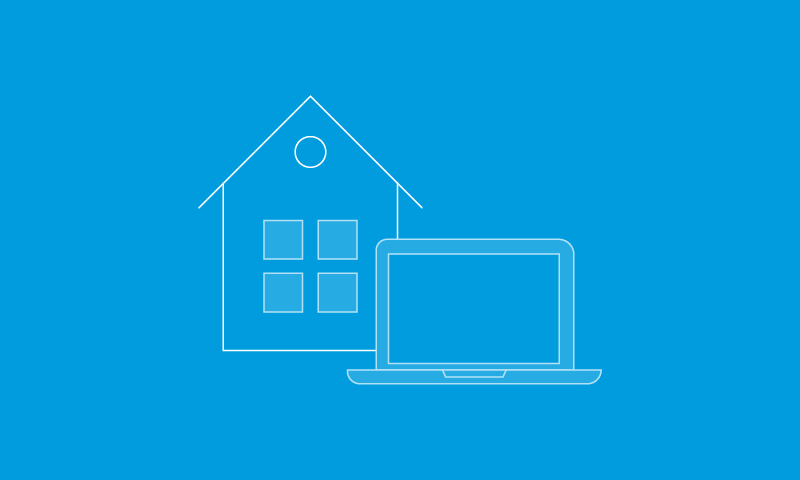21 June 2022
Changing landscape
The coronavirus pandemic has put a strain on the global healthcare sector, including workforce, infrastructure, and digitisation. It’s exposing social inequities in health and care and shifting the paradigm on what collaboration across healthcare systems looks like. The pandemic is therefore accelerating change across the system and forcing public and private health institutions to adapt and innovate.
The pandemic has without a doubt brought about widespread foundational shifts, and some positive disrupters. Examples include:
- service users being increasingly involved in healthcare decision-making;
- the rapid adoption of virtual health and other digital innovations;
- increased demand for data analytics in healthcare decision making; and
- unprecedented levels of collaborations between previously disparate parts of the healthcare system.
However, amid these tensions, governments, healthcare providers and other stakeholders around the globe have had to adapt or risk failing to safeguard the public.
In this briefing we look at some global healthcare trends that are driving change in the healthcare sector and some considerations for healthcare leaders to use these trends to shape the debate on navigating the post-pandemic world.
This briefing benefits from contributions across RSM’s global healthcare community, which works with over 3,000 healthcare organisations.
1. Waiting times
One of the most critical measures of the quality of a country's healthcare system is how long patients have to wait to access medical care. But the question of which countries have the shortest wait times is complicated by the different ways that countries measure wait time and the differences in the healthcare systems of various countries.
The Ipsos Global Health Service Monitor ran a survey in 30 countries between 30th August and 3rd September 2021. Key findings include:
- Coronavirus remains the biggest health problem facing people around the world (selected by 70% of people across all 30 countries, only slightly down on the 72% recorded last year).
- Half as many (34%) say that cancer is an important health concern in 2021, down from 37% last year. Meanwhile, mental health sees a 5-point increase to 31%, putting it just 3 points behind global concern about cancer.
- Despite a challenging couple of years for healthcare services, public perceptions are holding up well overall: 53% rate their country’s healthcare services positively, and 51% trust they will receive the best treatment.
- That said, a majority worldwide (56%) say that their country’s healthcare system is overstretched while access to treatment/waiting times is seen to be the main challenge for healthcare services (41%), followed by lack of staff (39%).
Considerations for healthacre leaders
- The rapid adoption of teleconsultation and telehealth is clearly here to stay. For many healthcare systems, “beat COVID-19 at any cost” has been the mantra, side-lining healthcare services that patients normally receive either from their public or private healthcare providers.
- Surgical hubs, new technology and innovative ways of working will help tackle waiting lists and treat around 30% more elective care patients by 2023 to 2024.
- Surgical hubs, virtual wards and artificial intelligence are key to tackling the backlog and putting healthcare on a sustainable footing.
- New treatment, diagnostic and surgical methods to see more patients quickly and safely.
2. Learning from the pandemic – future pandemic preparedness
The Global Health Security (GHS) Index assesses countries’ health security and capabilities across six categories and 37 indicators. The 2021 GHS Index finds that despite significant steps taken by countries to respond to the COVID-19 pandemic, all countries remain dangerously unprepared to meet future epidemic and pandemic threats. Importantly, countries now have a more acute understanding of what this lack of preparedness means for their health and prosperity.
Although many countries were able to quickly develop capacities to address COVID-19, all countries remain dangerously unprepared for meeting future epidemic and pandemic threats. A great opportunity exists, however, to make new capacities more durable to further long-term gains in preparedness. Most countries, including high-income nations, have not made dedicated financial investments in strengthening epidemic resilience. Countries are not prepared to prevent globally catastrophic biological events that could cause damage on a larger scale than COVID-19.
The disparity of availability to vaccines across the world with many countries not having access to vaccines and the ability to curb the impact of the pandemic as well as the issue this brings for those individual countries health needs and high levels of deaths may also lead to more and quicker mutations of the virus which with global travel will continue to prolong the effects of coronavirus for the whole world including those with all the vaccines.
Considerations for healthcare leaders
- Data related to epidemic and pandemic preparedness, such as disease surveillance, health systems, and response capacity data, should be publicly available so that officials within and beyond country borders understand the nature and magnitude of the threat and the tools available to contain it.
- A great opportunity exists, however, to make new capacities more durable to further long-term gains in preparedness.
- Systems will need to strengthen their preparedness for future epidemic and pandemic threats by adapting and sustaining those gains post pandemic.
- System leaders should invest in the preparedness needs of vulnerable populations to avoid exacerbating the impact of health security emergencies. These capacities are not just beneficial for health security emergencies; they are important for responding to routine health threats and can provide important benefits to countries’ overall health and development.
- Arrangements should be established and tested to allow immediate flows of data between bodies relevant to an emergency response with a mechanism to resolve immediately and decisively any disputes.
- A standing capability should be established in Government, or reporting to it, to scan the horizon for future threats, with adequate resource and counting on specialists with an independence from short-term political and administrative pressures.
- System leaders should ensure comprehensive plans are made for future risks and emergencies. The UK should aim to be a world leader in co-ordinating international resilience planning, including reform of the World Health Organisation to ensure that it is able to play a more effective role in future pandemics.
3. Patient experience
Service user requirements are driving innovation in healthcare related products, services, and tools. Their preferences are driving the development of digitally enabled, on-demand, and seamlessly connected clinician-patient interactions. Patients demands require health systems to continue down the path of introducing technology-enhanced health services which can help front line clinicians react quickly, adapt to future challenges and deliver care in better ways to revolutionise experiences for patients and the public.
Considerations for healthcare leaders
- Using new digital tools and services can enhance the patient experience and improve patient safety. It can also help consumers to track and monitor their health and follow their prescribed medication regimes.
- While patients are more willing to share their data, healthcare organisations should ensure that the data serves consumers’ needs by ensuring it’s shared securely between the organisations that need to store the data.
- To maintain or even re-earn the trust of service users, organisations should demonstrate reliability, transparency and, most importantly, empathy in how they operate.
4. New models of care
Healthcare has shifted away from its post-World War II focus on contagious disease and workplace accidents, which necessitated episodic interventions. Today, the primary goal is preventing and effectively managing chronic conditions. Productivity in healthcare is lagging behind other services industries as these goals shift. New technologies deliver care that is available close to home or in the home, supports continuous self and autonomous care, and reduces friction costs between supporting stakeholders. These shifts create an imperative for stakeholders to move toward an ecosystem-based model of care enabled by technological innovation. Data modelling is being used in new ways at the forefront of decision making. Now that Public Health organisations are working in this way, this approach will be extended to enable digital technology and behavioural science to focus on tackling determinants of health and inequalities.
Considerations for healthcare leaders
- New models of care architecture require a reset in priorities for the allocation of resources. Focus is shifting from simply providing medical care to caring for patients’ health and well-being, and providers should integrate this shift into the design of their service offerings and delivery channels/locations.
- Service users will expect care to be available when and how it’s most convenient and safe for them, as patients have long wanted the same customisable experience for their healthcare that they have with almost every other good or service provider. This includes:
- virtual care,
- at-home prescription delivery,
- remote monitoring,
- digital diagnostics and decision support, and
- self-service applications for education, behaviour modification, and social support.
- Organisations must be willing to invest in optimising or replacing foundational structures, technologies, and workforce processes. They should consider emerging financial models such as value-based care, healthcare services, and capitated payments that put patient needs and cost-management concerns front and centre.
- If the health and care system is to meet the challenge of rising demand versus available resource, then focus should also be on trying to prevent ill health or tackle it much earlier. Focus then has to be on population health rather than simply ‘the patient.’
5. Digital transformation and interoperable data
Digital transformation can help individual healthcare organisations and the wider health ecosystem to improve ways of working, expand access to services, and deliver a more effective patient and clinician experience. Four technologies are playing increasingly pivotal roles around the globe:
- cloud computing;
- tele-medicine;
- artificial intelligence (AI);
- and virtual care delivery.
Healthcare organisations are increasingly using AI and other forms technology to help diagnose illnesses. This trend is expected to accelerate, with diagnoses and treatment based on technological and scientific advancements including digital therapeutics, epigenetics and AI. The implementation of AI, nanotechnology, quantum computing and fifth-generation technologies will enable faster, customed diagnostics and more bespoke patient care pathways.
Considerations for healthcare leaders
- Healthcare organisations are transitioning to health IT systems powered by cloud and data and analytics tools to enable real-time, smart digital health. They are using interoperable data and platforms supported by deep learning capabilities and data sciences. They are also applying virtual care, AI, and other technologies to personalise medicine, enable real-time care interventions, and provide behavioural nudges.
- While patients are keen on making virtual visits in future, they are still not completely satisfied with their virtual interactions with clinicians. Training personnel in building virtual interpersonal relationships can be a major step toward improving a patient’s virtual visit experience.
- Radical data interoperability is a required foundational capability to enable healthcare providers and other stakeholders to deliver patient centric programs, solutions and associated technologies. If implemented efficiently, it can help elevate care delivery, co-production and patient empowerment, and provide a return on investment.
6. Social and economic dynamics
Access to care for certain disadvantaged groups is a challenge. This increasing demographic of underserved people groups and communities is leading to systematic disparities in the opportunities that this group has to achieve optimal health, and to unfair and avoidable differences in health outcomes.
What can healthcare stakeholders do to make health more equitable? Today’s socio-economic, and mental health crises have made it clear that all healthcare providers need to innovate to better serve the whole-health needs of people across the world.
Considerations for healthcare leaders
- Low-income families and ethnic minorities tend to be less healthy than other members of the population and are more likely to have more than one chronic condition. This affects life expectancy, quality of life, and even earning potential. Intervening earlier and creating more community contact enables better access to traditional care, as well as to food, educational resources, and connections to other social services agencies.
- There is an enormous need for governments and organisations across the world to address mental challenges. Unfortunately, industry stakeholders face considerable challenges in addressing the large scope of the behavioural health crisis.
Combining the power of disruptive technologies with ecosystems to create change and developing a framework of actions and commitments can empower individuals to manage their health and well-being and foster a sense of community and belonging.
7. Collaboration
One of the positive disruptors of the pandemic is a focus on collaboration across healthcare providers. Opportunities have arisen for new healthcare models, and for more effective stakeholder collaborations.
Another key lesson learnt is the strength and value of collaboration. Vaccine development, production and delivery were achieved in in record time – an unprecedented timeframe for any disease prevention tool. This goes to show that collaborative efforts with the right funding will go a long way in biomedical science.
Considerations for healthcare leaders
- The coronavirus pandemic has focused our health and social care system towards a common purpose – coming together to overcome coronavirus, ensuring capacity to help those who have been affected, and minimising the impact on the health and well-being of the overall population. Some of the policy responses to the pandemic included school and workplace closures, cancellations of public events and gatherings, and stay at home restrictions.
- People working in health and care have been working remotely and in an agile way to meet the demands of the pandemic. This should be built on to support new and improved ways of working for the future.
- Coronavirus is changing healthcare in the following ways:
- Telehealth, through virtual appointments and telephone calls.
- More people will receive care at home.
- The role of the pharmacist is changing. When doctors’ offices were closed or unavailable, some pharmacists filled a gap in care.
- Greater focus on preventive care.
- Interesting alliances are expected to arise between current healthcare providers and technology giants, each bringing distinct strengths to the arrangement. Many of these are based on creating value by combining and analysing datasets, and converting them into interventions that save costs and improve quality and the user experience.
8. Workforce challenges
Addressing near-term workforce challenges arising from coronavirus—in particular, safeguarding frontline staff’s safety and well-being—while also building future workforce adaptability and resilience will require data-driven, human-centric solutions that allow organisations to move quickly to support evolving employee needs.
Additionally, workforce shortages and the pandemic have highlighted how staff often work under enormous strain. Staff also want the option to work flexibly, so health systems are customising both the patient experience for each patient and the work experience for each employee. A talented workforce is essential to the provision of high quality care.
Considerations for healthcare leaders
- Training for clinicians and professionals will shift away from knowledge transfer to developing cognitive, digital, emotional, and analytical skills. This will all help professionals to communicate more effectively across specialities and use the technology available to them.
- Cloud technologies, remote-work platforms, shared services, and AI can enable organisations to extend the remote working arrangements established during the pandemic well into the future.
- Data on how individuals and teams interact and collaborate can help organisations look beyond the traditional organisational chart to:
- strengthen and expand networks and collaborations;
- nurture new ideas; and
- help foster a culture of inclusion and belonging.
How RSM can help
To discuss the impact of these changes in more detail, please contact our global healthcare specialists.

















